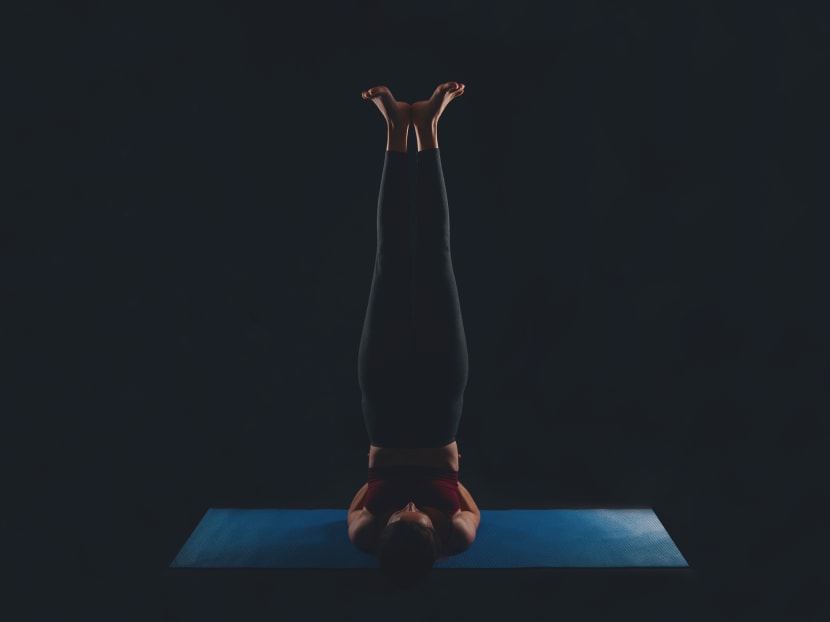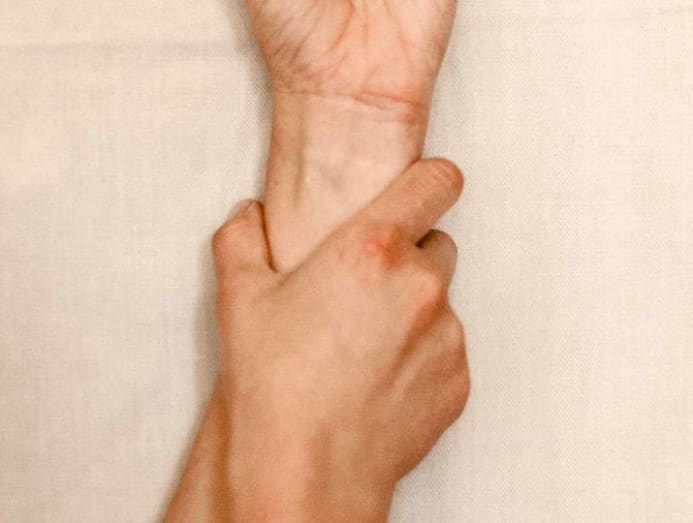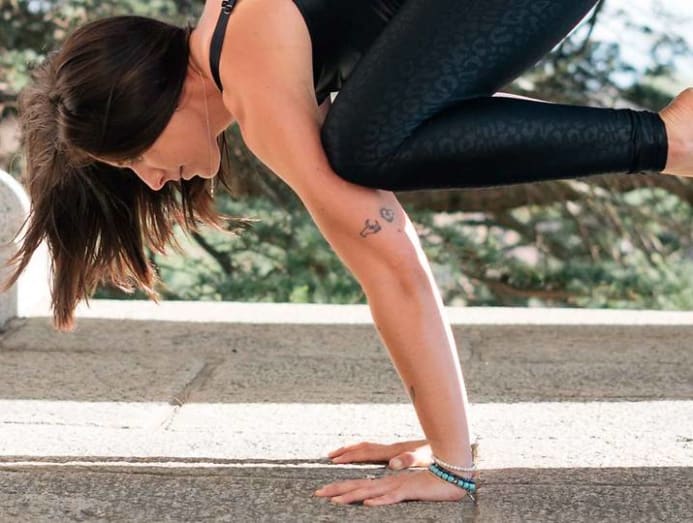Trying to do a headstand? Inversion yoga could lead to injuries when done wrongly
You’re alone in your room. Who’s going to see you in action? If you're not careful, your doctor. Plus, how to get back to inversions after injury.

(Photo: iStock/Cristalov)
You can’t get on Instagram and YouTube these days without seeing content showing lithe individuals in an effortless handstand or headstand, legs gracefully held aloft with nary a need for support from a wall. And there's going to more of such posts since Sunday (Jun 21) is International Yoga Day.
You think back to the last time you were able to invert yourself and it was probably in kindergarten. Any attempt to copy those yoga influencers now is likely to result in you looking like an upside-down beetle flailing its legs to right itself. Not a good look when you’re on Zoom with your yoga kakis.
READ: Yoga not 'masculine' enough for men? It actually helps your MMA game
Traditionally, inverted poses were created to help in meditation and concentration – a benefit that Victor Chau, a Hong Kong-based yoga instructor still ascribes to in these modern times.
“Inversions require a tremendous amount of concentration, otherwise you will fall down,” he said. “If you can be as focused in your daily life as you are when you practise inversions, you will be a lot more efficient in whatever you do.”
Inversions aren’t limited to headstands and handstands either. “Strictly speaking, any position that positions the heart over the head is considered an inversion in yoga practice. Even a standing forward fold or a downward facing dog can be inversions,” said Chau.
HEADS UP ON THE RISKS OF INVERSIONS
But here’s something to take note of: If you’re not ready to execute inversions, you could seriously injure yourself – along with your children or pets, and risk breaking the furniture at home.
“Firstly, some of these inverted yoga postures rest weight on areas that we are not used to putting our body weight on, such as the wrists and the neck,” said Adjunct Assistant Professor Jason Chia, who is the head and senior consultant of Tan Tock Seng Hospital’s Sports Medicine & Surgery Clinic.
READ: Should you attempt yoga if you have asthma, a headache or are on your period?
“Secondly, injuries happen when proper alignment is not observed or there is a lack of awareness. Or when the body compensates to achieve a certain posture which the person’s flexibility might not allow,” he said.
Naturally, the wrists, neck and shoulders are the common areas of injury as they’re not used to supporting your body’s weight. For instance, “wrist sprains and ligament injuries between the carpal bones are quite common”, said Kajal Kirpalani, a physiotherapist from Core Concepts.

Sometimes, not understanding what the posture entails is to blame. “Many people think that the head holds your body’s weight in a headstand when, in reality, the forearms and shoulders should be bearing most of the weight in order to achieve good alignment,” said Kirpalani.
Not only that, your lower back and hamstrings can be susceptible to sprains, strains and cramps, too, said Kirpalani.
“The back muscles may overcompensate for the gluteals and abdominals,” she said. But because the back muscles aren’t efficient at load bearing, they get strained.
As for your hamstrings, injuries can occur when you move into a forward fold “without contracting the front of the body muscles, such as the quadriceps and abdominals”. “This contraction is important as it allows the hamstrings to feel safe to let go and stretch,” she said. You can also pull your hamstrings from attempting a posture without proper alignment and control.
WHEN ARE YOU READY TO TRY INVERSIONS?
Before you even start, ask yourself: Do you have high blood pressure? Do you have a heart condition, eye problems, or head, neck, shoulder or wrist injuries? Are you, by any chance, pregnant? If you answered "yes" to any of those questions, consult a doctor before trying inversions, said Kirpalani.
Even if you’re medically in the clear, “most inversions are not suitable for complete yoga beginners”, said Chau. “I would suggest keeping a regular yoga practice (three or four times a week) for about five to six months, with the focus on core strength and shoulder opening before attempting inversions.”
There are exceptions to the case, of course. “If you have regularly done other exercises such as calisthenics or gymnastics, and you are very comfortable with going upside down, you are welcome to do inversions in a yoga class”.
You’d have concluded by now that poor alignment is a big issue of inverted postures. In class, that can be easily corrected by the instructor.
But what if you’re following an online video at home? Or you might be keen to try out live-streamed classes such as the ones at the 14-day Yogafest Virtual 2020, where Chau is teaching the Power In Inversions class.
“If you’re completely new to yoga inversions, ideally you should only learn or practise it in the presence of a qualified teacher,” said Chau.
As a gauge whether you’re ready to try inverted postures, test yourself with the Crane Pose, said Bethany Lyons, the co-founder of New York-based Lyons Den Power Yoga on Yoga Journal.
If you have to kick or jump off the floor to get into the pose, you’ll still need to work on your core strength – a big factor that will help you nail inversions.

WHAT SHOULD YOU LOOK OUT FOR?
If you still prefer to practise to online videos during Phase 2 (maybe you’re more comfortable at home than in a roomful of super-strong yogis or want to minimise your risk of COVID-19 infection), look out for videos that provide step-by-step progressions into the posture you’re trying to achieve.
READ: Not all online home workouts are safe for you – how to prevent injuries
Other than that, ensure that your mat has good grip and cushioning to prevent slipping and sliding across the floor, said Kirpalani. “Make it a habit to have cushions near you in the likelihood of a fall. Have a block within arm’s reach if necessary. And use a wall during the initial stages of inversions.”
“A wall or a bench where your feet can be supported or elevated respectively could be a good option,” said Chau. “You could also practise inversions with a friend next to you to prevent you from falling down and hurting yourself.”
Your friend can also help you take photos or videos of you in action, if you’re doubtful of your form, so you can see what area you need to work on, said Kirpalani.
Another thing to note, try to avoid inversions too soon after eating. “You wouldn’t want any acid reflux or gastric issues coming up,” said Kirpalani.
GOING FROM OMMM TO OWWW!
The minute you feel pain, stop immediately. “Listen to your body. Not everyone can do all the postures in yoga – stop if there is pain,” said Dr Lim Yeow Wai, a specialist in orthopaedic surgery and a consultant at Raffles Orthopaedic Centre. See a doctor or physiotherapist if the pain persists. This is the time to rest your injury and let it recover.
As for when you can start practising inverted postures again, it depends on where you’re hurt. “The neck is one of the most delicate areas to injure, and it takes time to heal,” said Dr Lim.
Your rest duration also depends on your daily activities. If you have a wrist injury and you do a lot of typing for work, that will delay recovery and may even further aggravate the injury, said Dr Lim.
Generally, let your body tell you when it’s ready. “You’ll know when it’s good to push through the slight pain and when it’s good to rest the area,” said Kirpalani.
But don’t go straight back to the inverted postures you did when you’re ready to exercise again. Instead, revisit the basics in yoga.
For instance, a neck sprain from doing headstands could benefit from the gentle head roll of the Rabbit Pose, said Chau. “For injuries from handstands, try wrist rolls and flexing the hands by bringing the palm closing to the forearm.”
You should also work on strengthening the recovered part with gradual loading. If you have an upper limb injury, start with external weights, then progressively return to short increments of supported inversion techniques, she said. To make it more challenging, reduce the use of support and increase the duration you hold the postures.
It is also a good idea to do short, multiple sessions instead of a singular long one each day. Take periods of active rest, where you practise for short periods, multiple times a day, with appropriate rests, including stretches in between, recommended Kirpalani.





